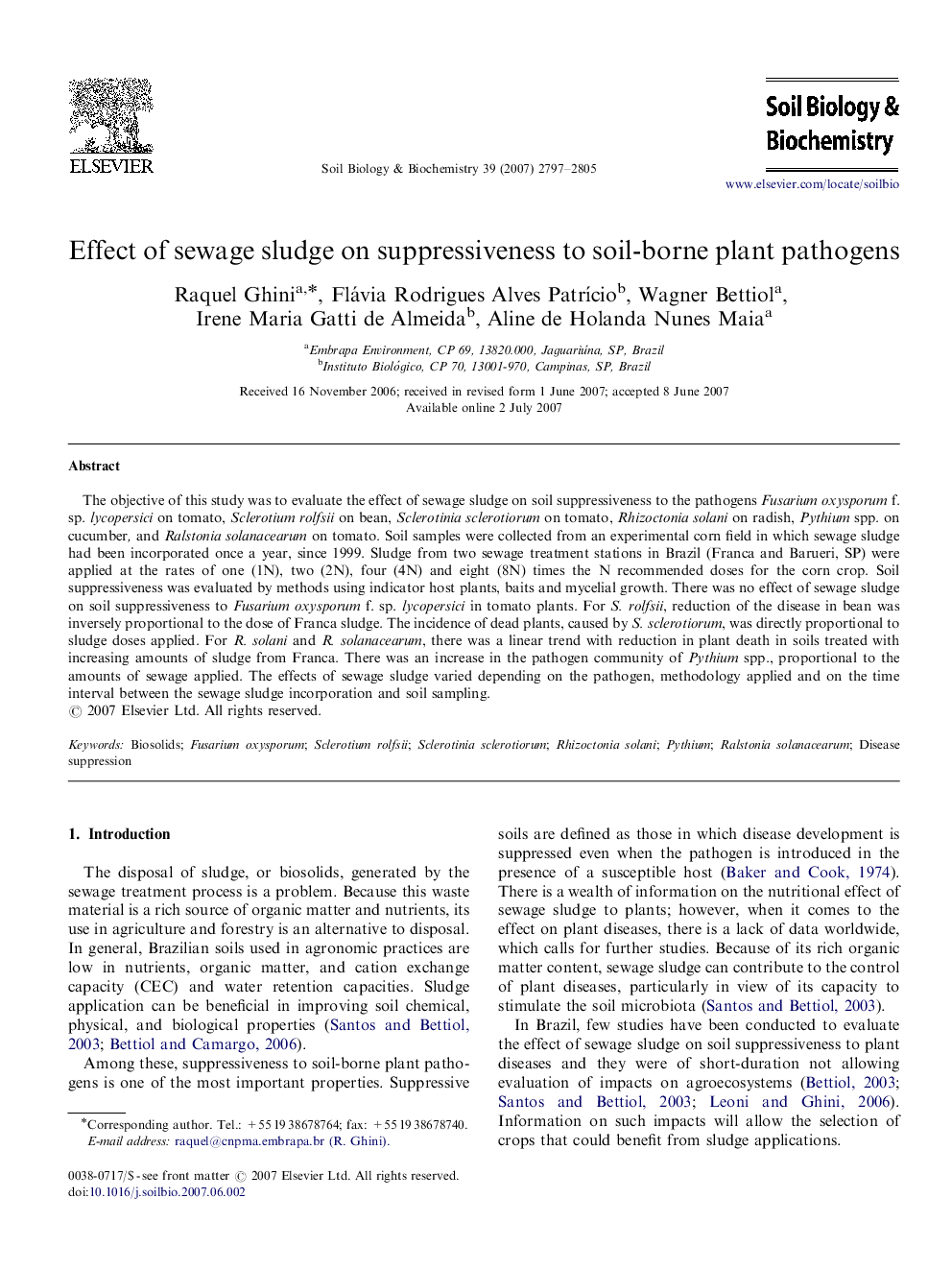| Article ID | Journal | Published Year | Pages | File Type |
|---|---|---|---|---|
| 2027028 | Soil Biology and Biochemistry | 2007 | 9 Pages |
The objective of this study was to evaluate the effect of sewage sludge on soil suppressiveness to the pathogens Fusarium oxysporum f. sp. lycopersici on tomato, Sclerotium rolfsii on bean, Sclerotinia sclerotiorum on tomato, Rhizoctonia solani on radish, Pythium spp. on cucumber, and Ralstonia solanacearum on tomato. Soil samples were collected from an experimental corn field in which sewage sludge had been incorporated once a year, since 1999. Sludge from two sewage treatment stations in Brazil (Franca and Barueri, SP) were applied at the rates of one (1N), two (2N), four (4N) and eight (8N) times the N recommended doses for the corn crop. Soil suppressiveness was evaluated by methods using indicator host plants, baits and mycelial growth. There was no effect of sewage sludge on soil suppressiveness to Fusarium oxysporum f. sp. lycopersici in tomato plants. For S. rolfsii, reduction of the disease in bean was inversely proportional to the dose of Franca sludge. The incidence of dead plants, caused by S. sclerotiorum, was directly proportional to sludge doses applied. For R. solani and R. solanacearum, there was a linear trend with reduction in plant death in soils treated with increasing amounts of sludge from Franca. There was an increase in the pathogen community of Pythium spp., proportional to the amounts of sewage applied. The effects of sewage sludge varied depending on the pathogen, methodology applied and on the time interval between the sewage sludge incorporation and soil sampling.
